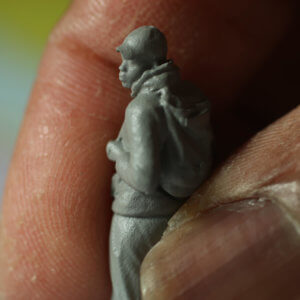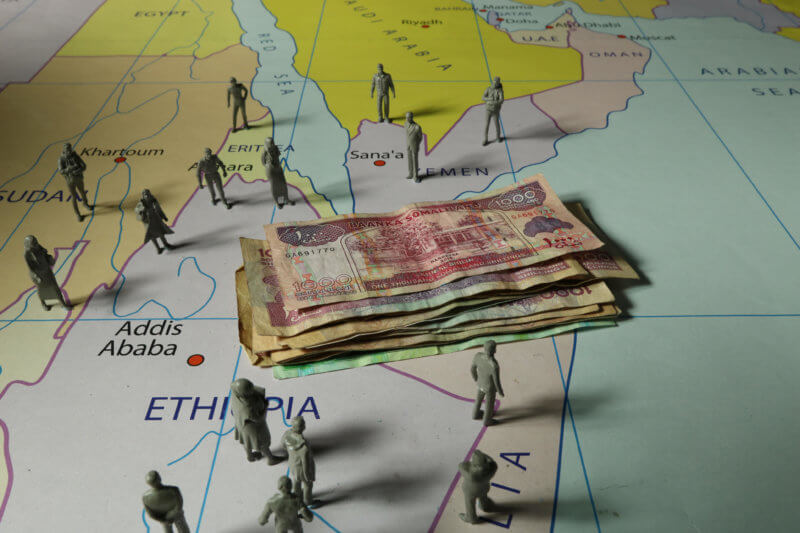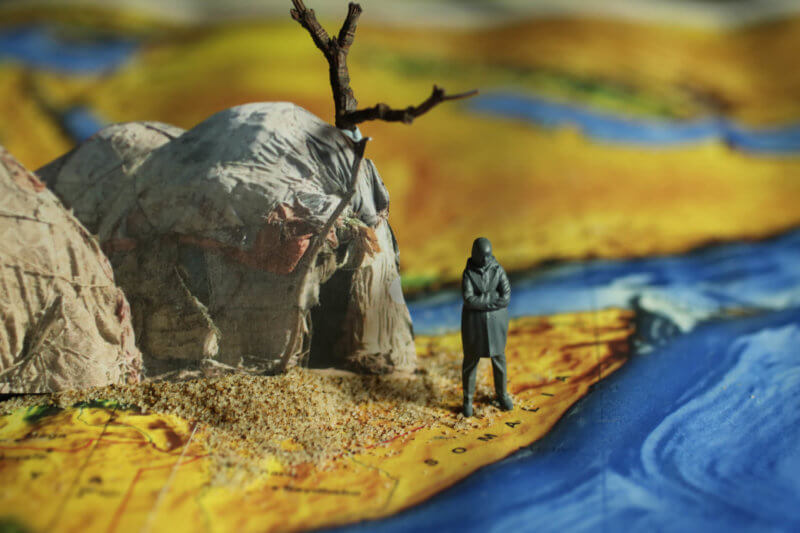Life On The Move
What is the film about?
LIFE ON THE MOVE – is an animated short that explores compelling personal stories from migrants who move across boarders in and around the Horn of Africa. The film disrupts mainstream media coverage of migration as a problem by combining academic research with stop motion animation to bring complex social, economic and personal reasons behind migration to life in a more holistic narrative.
Life on the Move is winner of the Social Media Short Award for RIFA 2019 (Research in Film Awards). The awards, organised by the Arts and Humanities Research Council (AHRC), are the only awards entirely dedicated to bringing to life arts and humanities research through film. They took place on 12 November 2019 at the BFI Southbank.
What influenced it?
The film is inspired by a multitude of migrant experiences as a way of visualizing social and economic ‘push and pull’ factors, that fuel the different reasons why people move across borders and migration routes. The film is directly influenced by the (MLT) Migration Leadership Team’s research and true-life testimonies conducted in Hargesia, Somaliland by PositiveNegatives.
A little background information...
The (LIDC-MLT) London International Development Centre Migration Leadership Team is leading a series of global conversations with academics, policy and practice experts, artists and migrants. This is a collaborative production, involving multi award-winning film maker Osbert Parker, LIDC-MLT, non-profit organisation PositiveNegatives, artist and graphic novelist Karrie Fransman with field work facilitated by the International Organisation for Migration. The research film is an animation, that tells multiple complex stories on mixed migration and is intended to be used as a tool that may inspire other researchers to engage in similar arts-based collaborations looking to develop impact from their research.
How was the film made?
After discussing initial ideas that would use migrant testimonies to form the basis of a script with the team and client. It was clear I had to find simple, but imaginative ways to bring these true stories to life in surprising ways that allowed viewers to emotionally connect with personal experiences without revealing people’s identities, especially when filming migrants in the Horn of Africa was not a option for several reasons. Animated characters, was the perfect choice to protect anonymity and focus audience attention on the message and heart of the stories.
In response to the brief and as opposed to live action, that mainly represents what the physical eye sees. I wanted to create a simple, but innovative animated film that would also represented the mind’s eye and visually communicate research in exciting and engaging ways, because it needed to make a strong emotional and longer lasting impact on viewers than live action.
Before settling on using miniature 3D figures, I created animation tests and over 2,000 photographic ‘style frames’ in my studio investigating IF and HOW miniature figures would work effectively as leading characters to tell these personal stories of migration.
Creating ‘style frames’ is a practice-based research and experimental process in itself – a journey I always undergo to find a visual language and distinct style for each film I create.
Only images that successfully reinforced the film’s core message using miniature figures and objects on maps evoking the right tone, mood and atmosphere through specific lighting set ups and camera angles were chosen to bring these narratives to life. Working in interdisciplinary collaboration is always important for me and believed the team and client was unanimously excited with this evidence based approach, because the style frames demonstrated exactly what the film would look and feel like, thus allowing viewers to intellectually and emotionally connect with the narratives.
The film seamlessly combined humanitarian work conducted in the field, and innovative 3D scanning technology to produce miniature 3D figures of real people with in-camera stop motion effects. Some people scanned are from countries described in the film with family and/or friends with experiences of migration. Production from script to screen took five and half months to produce a 4 minute animated film with an episodic structure visualising different peoples experiences and migration routes.
In fact, this stop motion approach shifted emphasis in surprising ways, gripping audiences with ‘stripped back’ animated pictures, which visually reinforced and strengthened the core message in ways that I believe would not be impossible using live action. e.g. The end sequence which seemingly shows hundreds of people moving across the map of the world as an illustration of global migration in content of the film. Guns violently bursting through maps to illustrate how war physically tears countries and communities apart creating migration for negative reasons. Money representing new businesses and the growth of a hospital in Somaliland are symbolised through an animated coffee cup and medical objects are used to illustrate and reinforce migration as positives in distilled and inventive ways, quickly and effectively.










